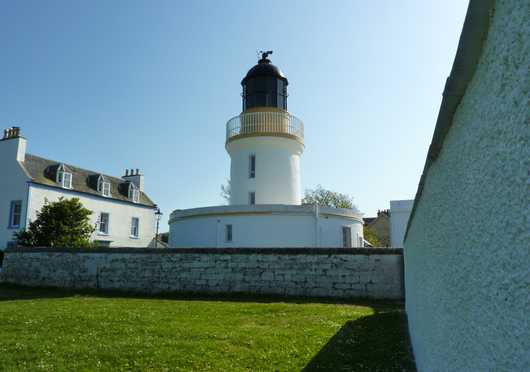Cromarty

Cromarty is a small village located on a spit of land in the Black Isle, formed by glacial deposits at the end of the last ice age. It extends northward into the Cromarty Firth, which was once an important refuge for the booming fishing industry, but now finds itself just as useful as a sheltered deep-water sea loch where huge north sea oil rigs can be stored, repaired and decomissioned.
The lighthouse tower is a short and rather plain tower, with a semi-circular building wrapped around its base. A singular dwelling is located to the side of the lighthouse. This light was designed to be kept by just one keeper. An almost direct copy of this lighthouse can be found only a few miles at Chanonry Point, although there are subtle differences between the two.
The lantern room retains the original square astragals and square panes of glass, complete with ornate hand-grips for exterior window cleaning, which were designed to resemble mythical sea serpents, carrying on a design first installed on lantern rooms by Robert Stevenson.
The lighthouse was automated in 1985, at which time it was converted to electricity. The origial lens from the lighthouse was replaced by a modern ML-300 acrylic lamp, with a backup lamp of a different type mounted on a bracket on the balcony railing. Following a review of aids to navigation made in 2005, it was announced that Cromarty Lighthouse would be discontinued, as the purpose of the light was being fulfilled by buoys in the channel. The light was switched off on February 28th 2006.
The lighthouse grounds are part of the University of Aberdeen, and are not usually open to the public, however, the light is located in the centre of Cromarty village, so it can be viewed with ease from George Street and the nearby a car park at the end of Marine Terrace.
